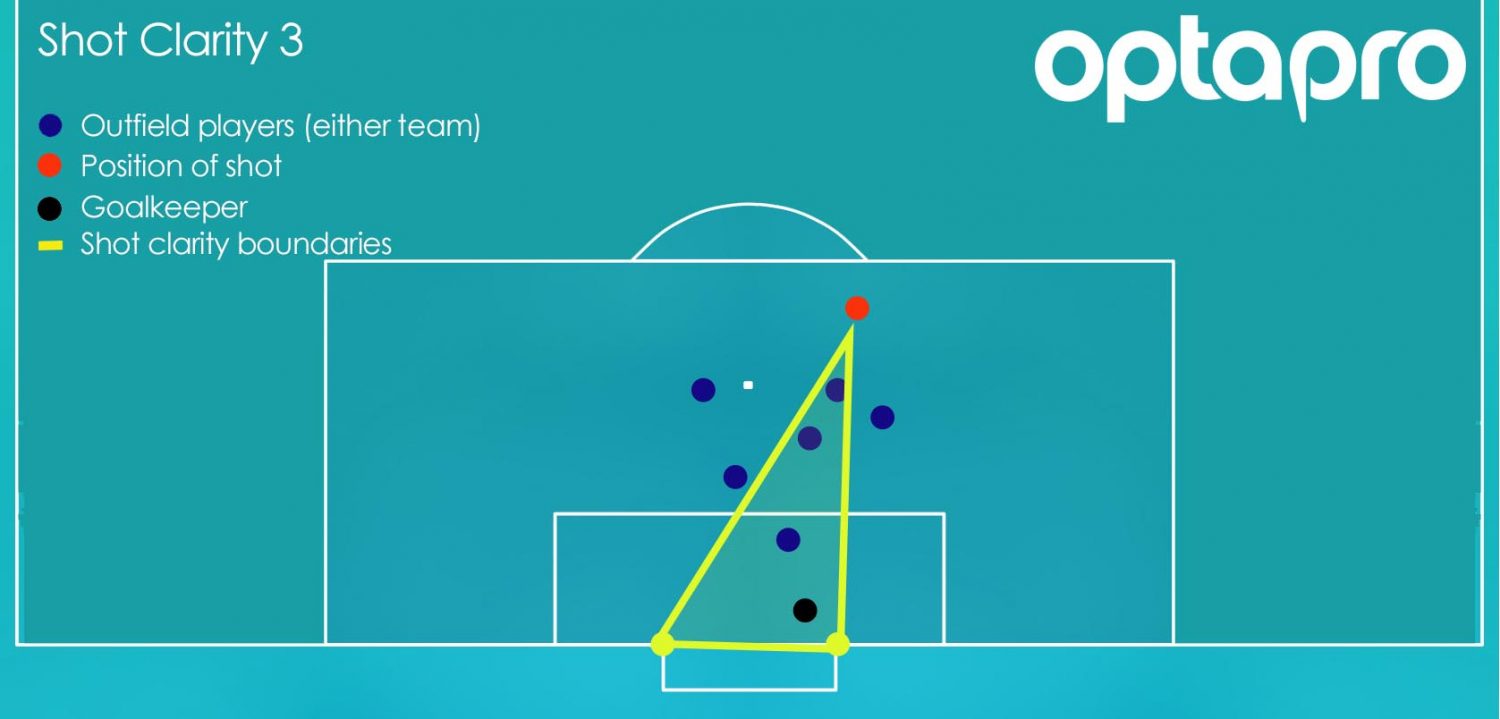“The defender did just enough to put him off there.”
11 – Romelu Lukaku has scored the most goals from attempts under high pressure from defenders in the Premier League this season. Qualifier.
— OptaPro (@OptaPro) May 9, 2018
Every time a player in the Premier League has touched the ball since 2005, Opta has collected this information. Across every major competition in the world, Opta logs every ball touch.
Since the beginning of the 2017/18 season, this has evolved. First-time shots, shot clarity and shot pressure are now qualifiers within the Opta database.
Powered by bespoke data collection centres around the world, this welcome addition provides a further level of depth to the data that underpins some of the most advanced analysis in football.
First-time shot aside, it is of course acknowledged that there is an element of subjectivity to these additional qualifiers, so this short post will help provide further… clarity.
Shot clarity
Shot clarity is determined by the number of players (opposition and own team included) obstructing the ball’s path to goal. The qualifier has three levels and is collected for every attempt, depending on the number of players blocking the ball’s path to goal. The goalkeeper is excluded from this count unless they are within two metres of the shooter.
Shot clarity is affected by players from both teams, so any player standing in this zone apart from the goalkeeper would affect the level of shot clarity assigned to the attempt.
The example below is a shot taken at level 3.

Shot pressure
Shot pressure is judged by the amount of pressure a player is under when they shoot at goal. Pressure is judged by the speed and effort a player makes when closing-down the shooter and by their distance from the shooter. Pressure can be applied from all angles.
As with shot clarity, this is split across three levels, depending on the level of pressure. The levels are decided by the amount of pressure placed on the shooter and the distance the defensive players are away from the shooter.
Collection technology enables a ‘pressure circle’ to be added to quantify the distance between opposition players and the ball.

What next?
This additional layer of granular data will help inform more in-depth analysis in football. Expected goals models are a prime example of a place where these qualifiers can make an immediate impact. A common criticism of many expected goals models is that they don’t account for defensive positioning. Because of this, fine-grained analysis is often needed to understand consistent over or under-performance of expected goal rates.
These qualifiers can shine some light on factors important to chance quality that previously could only be incorporated by proxy. Analysis of team attacking and defensive style and strength will be able to lean on more reliable expected goal estimates as well as simple aggregates of pressure numbers that yield vital information about defensive compactness. Models that analyse the final pass could also benefit from information about defensive positioning. Using shot information, we might be able to identify players who consistently play passes that result in more clear scoring chances than other contextually similar passes made by other players. Further applications are sure to come, but having defensive context for shots will add an immediate boost to existing research and models by addressing a crucial blind-spot.
Further information around how these qualifiers will be added to our products will be shared in the near future.